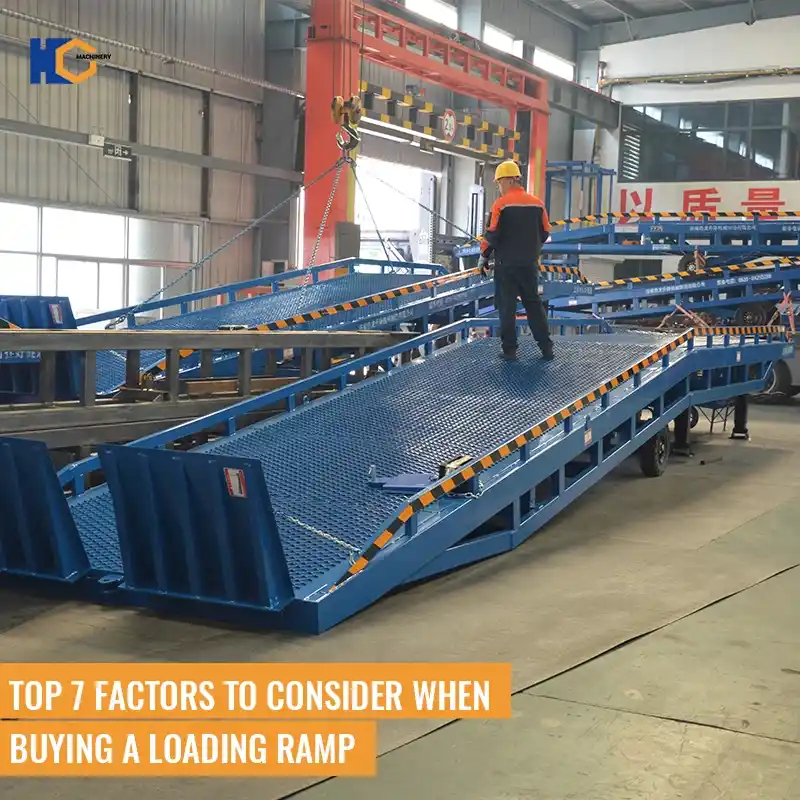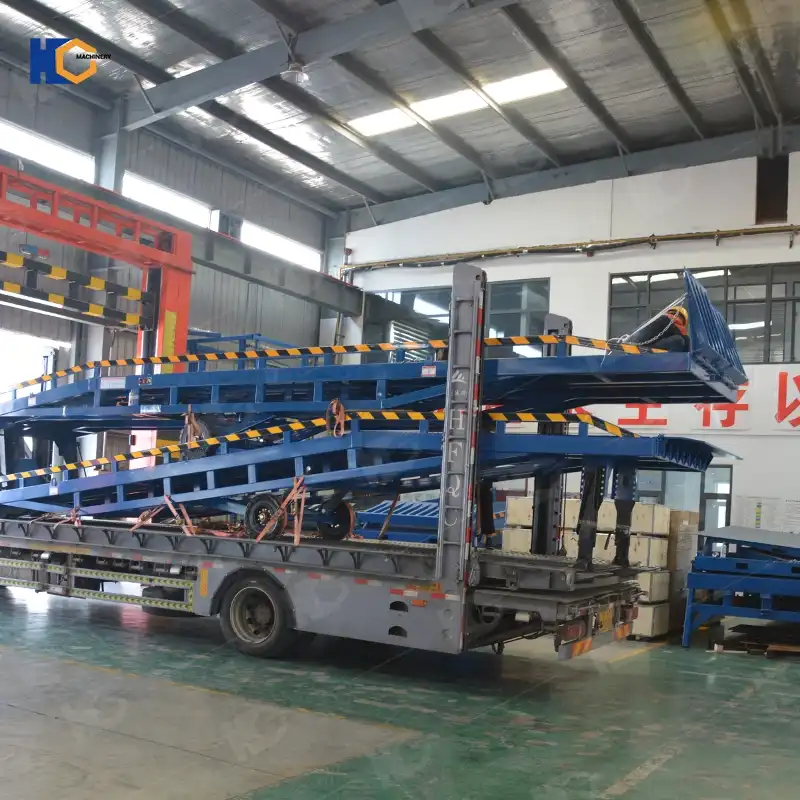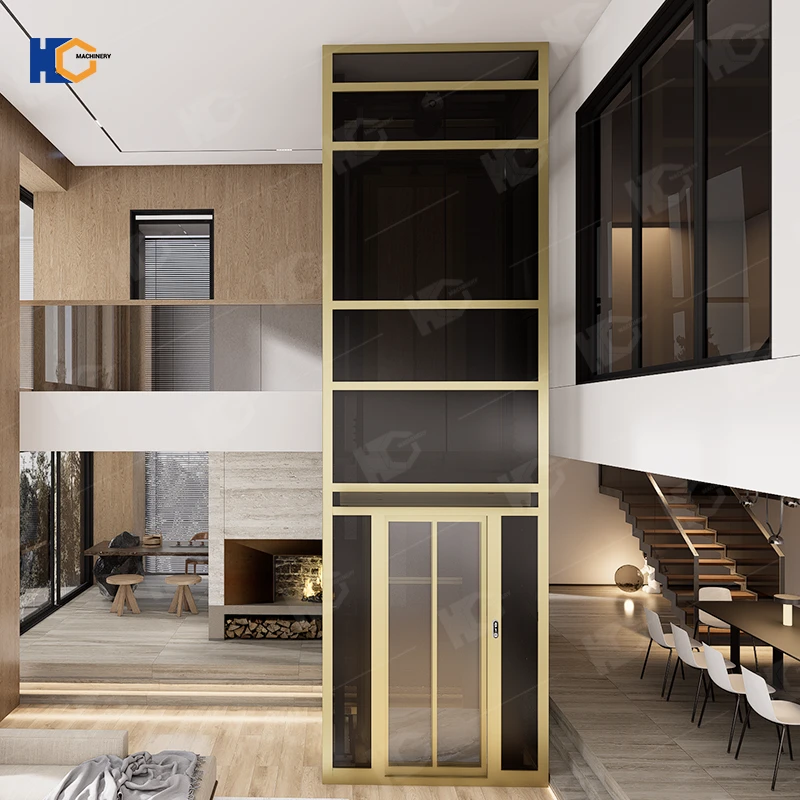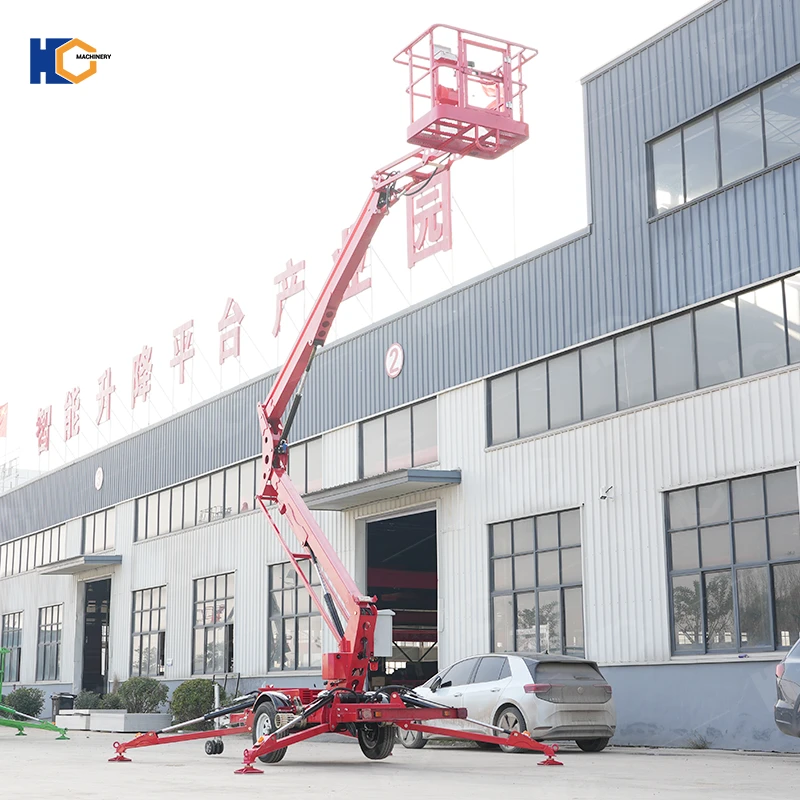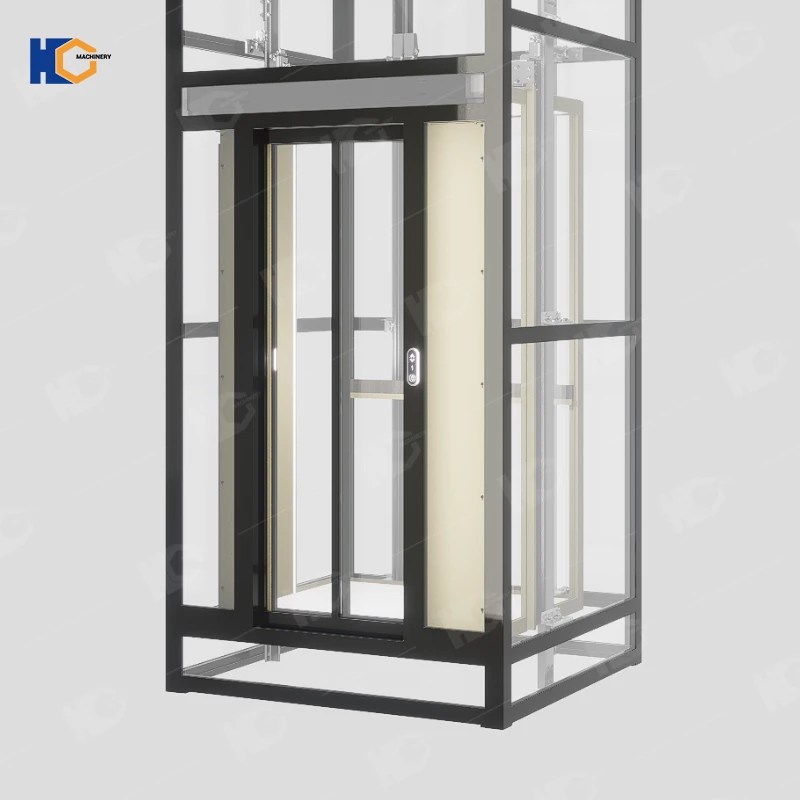Selecting the proper loading ramp is a critical decision that impacts workplace safety, operational efficiency, and your bottom line. Whether you're loading heavy machinery onto trucks, moving inventory in a warehouse, or handling materials at a construction site, the right ramp ensures smooth transitions while preventing costly accidents and equipment damage.
Loading ramps serve as essential bridges between different elevation levels across numerous industries. Warehouses rely on them for daily forklift operations, trucking companies use them for vehicle loading, construction sites need them for equipment transport, and agricultural operations depend on them for moving heavy machinery. Each application has unique requirements that demand careful consideration when selecting a ramp.
The consequences of choosing an inadequate ramp can be severe. A ramp with insufficient weight capacity might collapse under pressure, potentially causing injuries and damaging valuable cargo. An improperly sized ramp could create dangerous inclines, increasing the risk of slips and falls. Poor-quality materials may corrode or degrade quickly, leading to frequent replacements that eat into your budget.
"Picking the wrong ramp can lead to accidents or wasted money—here's how to avoid it." In this comprehensive guide, we'll walk you through the seven most crucial factors to evaluate when purchasing a loading ramp. From understanding weight specifications to selecting the right materials and safety features, these insights will help you make an informed decision that enhances workplace safety while maximizing your investment's value. Whether you're a facility manager, business owner, or equipment operator, this information will prove invaluable in your ramp selection process.
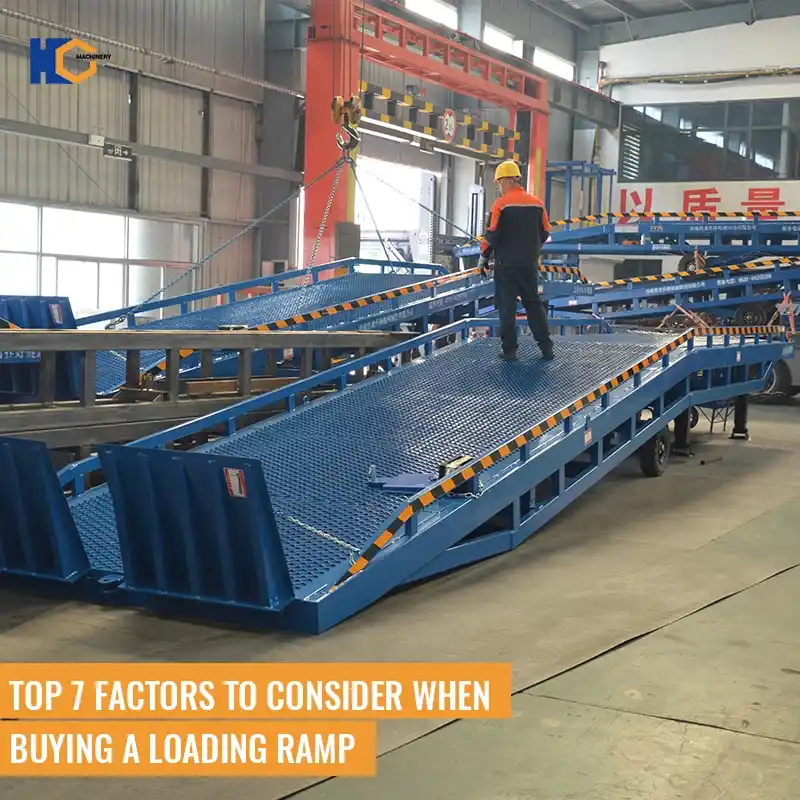
Factor 1: Weight Capacity
When selecting a loading ramp, weight capacity stands as the most fundamental and non-negotiable consideration. This specification determines whether your ramp can safely handle the loads you need to move without risking catastrophic failure. Overloading a ramp beyond its rated capacity can lead to structural deformation, sudden collapse, or dangerous bouncing during use - all of which pose serious safety hazards to workers and potential damage to valuable equipment.
To properly calculate your required weight capacity, you'll need to account for all variables that will be on the ramp simultaneously. Start with the maximum weight of your cargo, then add the full weight of any vehicles or equipment that will be moving it (such as forklifts, pallet jacks, or utility vehicles). For example, if you're loading 2,000-pound pallets using a 5,000-pound forklift, your ramp must accommodate at least 7,000 pounds. Don't forget to include the weight of any personnel who might need to walk on the ramp during operations.
Industry professionals strongly recommend selecting a ramp with 25-30% higher capacity than your calculated maximum load. This safety buffer accounts for potential load variations, dynamic forces caused by movement, and any unexpected impacts during use. For instance, if your calculations show you need a 10,000-pound capacity, look for ramps rated for 12,500-13,000 pounds. This extra margin not only enhances safety but also extends the ramp's service life by preventing constant stress at maximum capacity. Remember that weight capacity ratings should be clearly marked by reputable manufacturers and verified through third-party testing when possible.
Factor 2: Ramp Material
The material of your loading ramp directly impacts its durability, weight, maintenance needs, and suitability for specific environments. The two most common options—steel and aluminum—each have distinct advantages depending on your operational requirements.
Steel ramps are the go-to choice for extreme heavy-duty applications. Their superior strength makes them ideal for frequent use with maximum load capacities, such as in industrial yards or construction sites. However, steel's significant weight makes these ramps less portable and more challenging to reposition. They also require regular maintenance to prevent rust, especially in humid or coastal environments. Powder-coated or galvanized steel offers better corrosion resistance but adds to the cost.
Aluminum ramps provide an excellent balance of strength and portability. Weighing up to 50% less than steel, they're perfect for businesses that need to frequently move or store ramps. Aluminum naturally resists corrosion, making it ideal for outdoor use or facilities exposed to moisture. While generally more expensive upfront, aluminum ramps often prove cost-effective long-term due to minimal maintenance needs. Their lighter weight does mean slightly reduced impact resistance compared to steel.
For specialized applications, consider:
Fiberglass ramps: Non-conductive and spark-resistant, crucial for chemical plants or electrical work environments.
Rubber-coated ramps: Provide exceptional traction and vibration dampening, excellent for delicate equipment or slippery conditions.
Hybrid designs: Some ramps combine aluminum frames with steel treads for optimized strength-to-weight ratios.
When choosing materials, consider your typical load weights, frequency of movement, environmental conditions, and budget. A food processing plant might prioritize corrosion-resistant aluminum, while a scrap metal yard would likely opt for heavy-duty steel. The right material selection ensures your ramp delivers both safety and value throughout its lifespan.
Factor 3: Ramp Length & Slope
The relationship between ramp length and slope is critical for both safety and operational efficiency. A properly sized ramp ensures smooth transitions while minimizing strain on equipment and reducing accident risks. OSHA guidelines recommend maintaining an incline of 20 degrees or less for loading ramps, with steeper slopes requiring additional safety measures.
Why Slope Matters
A gentler slope (achieved with a longer ramp) significantly improves safety and usability. For heavy equipment like forklifts, a steep incline can cause instability, potential tip-overs, or excessive strain on vehicle brakes. A good rule of thumb: for every 1 inch of vertical rise, you need at least 1 foot of ramp length. For example:
24-inch dock height: Requires an 8-foot ramp (24° slope) for light manual loading, but a 10-12 foot ramp (≤20° slope) for forklifts
36-inch truck bed: A 12-foot ramp creates a safer 18° slope for vehicle loading
Load-Specific Considerations
Heavy machinery: Require longer ramps (even beyond OSHA minimums) to prevent bottoming out
Non-motorized loads: Can use slightly steeper slopes (up to 25°) when using hand trucks or carts
High-frequency operations: Longer ramps reduce wear on equipment brakes and tires
Special Applications
For ultra-high docks (48"+), consider:
Multi-section ramps with intermediate platforms
Articulated ramps that adjust to various heights
Dock levelers for permanent high-volume locations
Always measure both your vertical rise and available space before selecting ramp length. While longer ramps offer safety advantages, they require more storage space and may not be practical for all facilities. The ideal ramp balances slope safety with your operational constraints.
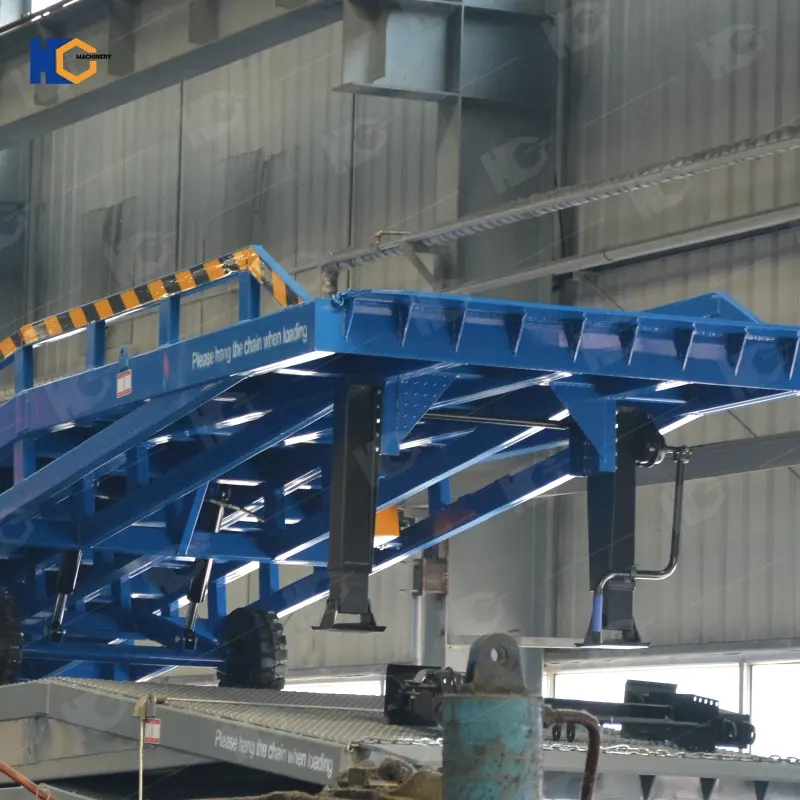
Factor 4: Surface Traction
A loading ramp’s surface traction is crucial for preventing slips, falls, and equipment mishaps—especially in high-traffic or hazardous environments. The right texture and material can mean the difference between smooth operations and workplace accidents.
Key Anti-Slip Features
Diamond Plating – A popular choice for steel ramps, diamond tread patterns provide excellent grip for forklift tires and footwear. Ideal for industrial settings with heavy machinery.
Grooved or Serrated Surfaces – Deep grooves channel water, oil, and debris away, maintaining traction in wet or dirty conditions. Common in aluminum ramps.
Rubberized Coatings – Non-slip rubber surfaces enhance grip for foot traffic and delicate loads. Often used in portable ramps or food-grade facilities.
Grit Tape or Anti-Slip Paint – An affordable add-on for existing ramps, improving traction in high-risk zones.
Weather & Environmental Considerations
Rain & Ice – Opt for deep-tread designs or heated ramps (in extreme climates) to prevent slippery surfaces.
Oil & Chemical Spills – Choose corrosion-resistant materials (like aluminum with grooves) that won’t degrade from exposure.
Outdoor vs. Indoor Use – Outdoor ramps need drainage features, while indoor ramps may prioritize smooth but grippy surfaces.
Best Practices for Maximum Safety
Regular Maintenance – Clean grooves and check for wear to prevent traction loss over time.
OSHA Compliance – Ensure ramps meet slip-resistance standards (e.g., a 0.5+ coefficient of friction for walkways).
Load-Specific Needs – Delicate or high-speed loads (like ATVs) benefit from rubberized surfaces to minimize bounce.
Choosing the right traction solution depends on your environment, load type, and frequency of use. A well-designed ramp surface enhances both safety and efficiency, reducing accidents and downtime.
Factor 5: Portability & Storage
When selecting a loading ramp, portability and storage play a major role in daily operations—especially for businesses with limited space or those requiring frequent ramp repositioning. The choice between foldable and fixed ramps depends on your workflow, storage capacity, and stability needs.
Foldable vs. Fixed Ramps: Key Trade-Offs
| Feature | Foldable Ramps | Fixed Ramps |
|---|---|---|
| Portability | ✅ Easy to move/store | ❌ Heavy, difficult to reposition |
| Stability | Slightly less rigid (hinge points) | ✅ Stronger, no weak joints |
| Setup Speed | Requires unfolding/locking | ✅ Ready to use immediately |
| Storage Space | ✅ Compact when folded | ❌ Requires dedicated space |
Weight Considerations: Aluminum vs. Steel
Aluminum Ramps – Best for businesses needing frequent ramp movement (e.g., delivery trucks, multi-site operations). Lightweight yet durable, they reduce worker fatigue.
Steel Ramps – Ideal for permanent installations where stability is critical (e.g., warehouse docks). Heavier but more rigid for heavy loads.
Optimizing Portability Without Sacrificing Safety
Wheel Kits – Some ramps come with caster wheels for effortless transport.
Modular Designs – Multi-piece ramps allow adjustable length while remaining portable.
Wall/Ceiling Mounts – Save floor space by storing foldable ramps vertically.
When to Choose Each Type?
Foldable Ramps → Delivery services, mobile businesses, tight storage spaces.
Fixed Ramps → High-traffic docks, industrial settings, maximum stability needs.
Pro Tip: If you need both portability and strength, look for heavy-duty aluminum ramps with reinforced hinges—they offer the best of both worlds.
By evaluating your workflow, storage space, and load requirements, you can select a ramp that maximizes efficiency without compromising safety.
Factor 6: Safety Features
A loading ramp’s safety features are critical for protecting workers, equipment, and cargo. Even the strongest ramp can become a hazard without proper safeguards. Here’s what to look for to ensure safe, OSHA-compliant operations.
Essential Safety Features for Loading Ramps
1. Edge Protection (Side Curbs & Wheel Guards)
Prevents Run-Off Accidents – High side rails (4+ inches) keep forklifts and hand trucks from slipping off edges.
Wheel Guides – Help align vehicles during loading, reducing misalignment risks.
2. Attachable Safety Chains or Dock Straps
Secures Ramp to Dock/Truck – Prevents ramp displacement during use.
Quick-Release Options – Allow fast detachment when needed.
3. Non-Slip End Hooks & Stable Base Plates
Anti-Skid Pads – Prevent ramp movement during loading/unloading.
Dock Locks – Ensure a tight connection between ramp and platform.
4. High-Visibility Markings
Reflective Strips – Improve visibility in low-light conditions.
Hazard Stripes – Warn workers of ramp edges and transition points.
OSHA & ANSI Compliance Checklist
Loading ramps used in workplaces must meet safety standards to avoid violations. Key requirements include:
✔ Slope ≤ 20° (or additional fall protection if steeper)
✔ Minimum 0.5 Coefficient of Friction (anti-slip surfaces)
✔ Guardrails (42" high) if ramp is 4+ feet above ground
✔ Weight Capacity Clearly Marked (no overloading)
Pro Tip: Look for ramps with third-party certifications (e.g., ANSI MH30.2 for dock equipment) to ensure compliance.
When Are Extra Safety Features Necessary?
High-Traffic Facilities → Require reinforced edges and non-slip surfaces.
Outdoor/Weather-Exposed Ramps → Need corrosion-resistant materials and drainage.
Heavy Machinery Loading → Should have wheel chocks or brake systems.
Final Recommendation: Never compromise on safety—invest in ramps with built-in safeguards rather than relying on add-ons. A compliant, well-designed ramp reduces liability and prevents costly workplace accidents.
Factor 7: Cost vs. Long-Term Value
When purchasing a loading ramp, the initial price tag is just one part of the equation. A truly cost-effective choice balances upfront costs with durability, maintenance needs, and lifespan—saving you money (and headaches) in the long run.
Cheap vs. Premium Ramps: The Real Cost Breakdown
| Factor | Budget Ramps | Premium Ramps |
|---|---|---|
| Upfront Cost | Low ($) | Higher ($$$) |
| Material Quality | Thin steel/weak welds | Reinforced steel/aluminum |
| Lifespan | 1–3 years (with heavy use) | 5–10+ years |
| Maintenance | Frequent repairs/replacements | Minimal upkeep |
| Warranty | Limited or none | 5+ years coverage |
Key Insight: A $500 ramp that lasts 2 years costs $250/year, while a $1,500 ramp lasting 10 years costs just $150/year—plus avoids downtime.
Hidden Costs to Consider
Maintenance & Repairs
Cheap ramps often need re-welding, anti-rust treatments, or tread replacements.
Example: A $200 ramp requiring $100/year in repairs loses value fast.
Warranty & Support
Premium brands offer free part replacements or repairs (e.g., Buyers Products, Dura-Ramp).
Cheap ramps may have no customer service when issues arise.
Downtime & Replacement Hassles
A failed ramp can halt operations, costing more in delays than the ramp itself.
Heavy-duty ramps reduce replacement frequency, saving labor/time.
Resale Value
High-quality aluminum/steel ramps retain ~40–60% resale value.
Cheap ramps often end up as scrap metal.
When Does "Cheap" Make Sense?
Very light, infrequent use (e.g., moving small equipment once a month).
Temporary job sites where ramps won’t face long-term wear.
When to Invest in Premium?
Daily industrial use (warehouses, trucking, construction).
Harsh environments (saltwater, extreme temps, chemicals).
Safety-critical applications (high loads, steep slopes).
Smart Buying Tips
✔ Compare 10-year cost projections, not just sticker prices.
✔ Check warranty terms (look for at least 3–5 years).
✔ Read reviews on real-world durability (not just specs).
Final Advice: "Buy nice or buy twice." A slightly higher investment today can prevent costly replacements, accidents, and operational delays tomorrow.
Conclusion: Your Loading Ramp Buying Checklist
Selecting the right loading ramp is a strategic decision that impacts safety, efficiency, and your bottom line. To recap, here are the 7 key factors to evaluate before purchasing:
✅ 1. Weight Capacity – Always choose a ramp rated 25-30% above your max load.
✅ 2. Material – Steel for heavy-duty use, aluminum for portability, specialty options for unique needs.
✅ 3. Length & Slope – Follow OSHA’s ≤20° incline rule; longer ramps = safer slopes.
✅ 4. Surface Traction – Diamond plating, grooves, or rubber coatings to prevent slips.
✅ 5. Portability & Storage – Foldable for convenience, fixed for stability; aluminum for frequent moves.
✅ 6. Safety Features – Side curbs, wheel guards, and OSHA/ANSI compliance are non-negotiable.
✅ 7. Cost vs. Value – Invest in durability to avoid hidden repair/replacement costs.
Still Unsure? Get Expert Guidance!
Every business has unique needs—whether you’re loading forklifts in a warehouse, trucks at a dock, or heavy machinery on a job site.
Let Huichuang Lift’s experts help you:
Match the perfect ramp to your specific loads and environment.
Compare hot sale models for the best long-term value.
Ensure OSHA compliance and workplace safety.
Contact Us Today for a free consultation!
Email: admin@jnhclift.com
Website: https://www.jnhclift.com/
Don’t gamble with safety or efficiency—get it right the first time!
